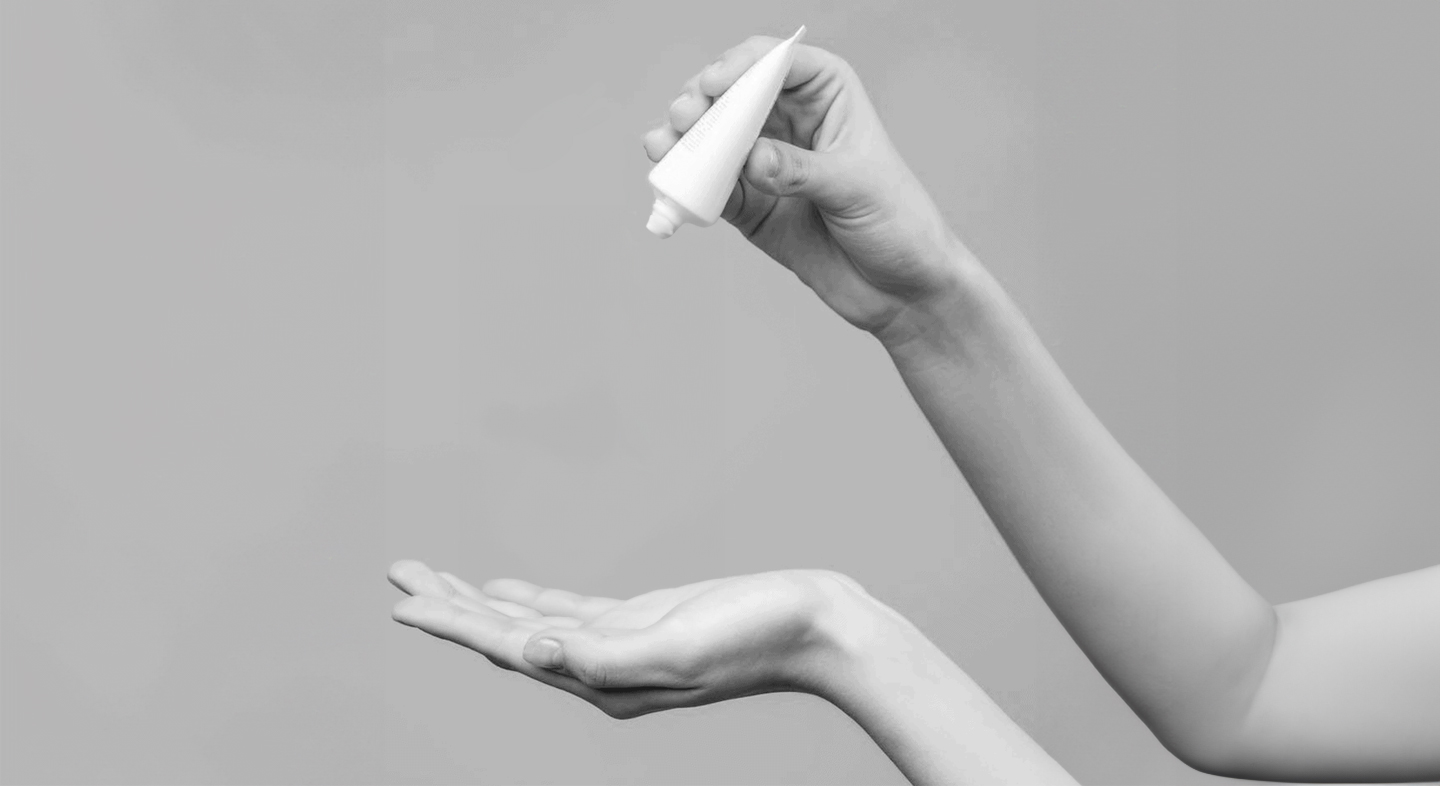
Microbiome
on
Skin care
peer-reviewed

Microbiome-friendly - The How and Why of this claim
KRISTIN NEUMANN
MyMicrobiome, Balzers, Liechtenstein
ABSTRACT: ‘The future of cosmetics is playing out in the microbiome’ – this is a citation from L’Orèal (1). How and why should this topic be addressed? To formulate with the microbiome in mind, it is pivotal to understand the skin’s microbiome function, the influence cosmetics and other products can have on the skin’s microbiome, and what to look after when making a ‘Microbiome-friendly’ claim. This paper explains the skin microbiome’s function and potential effects of cosmetics and how to address the ‘Microbiome-friendly’ claim.
??????????????????
“
“A study in healthy women providing probiotic yogurt for four weeks showed an improvement in emotional responses as measured by brain scans”
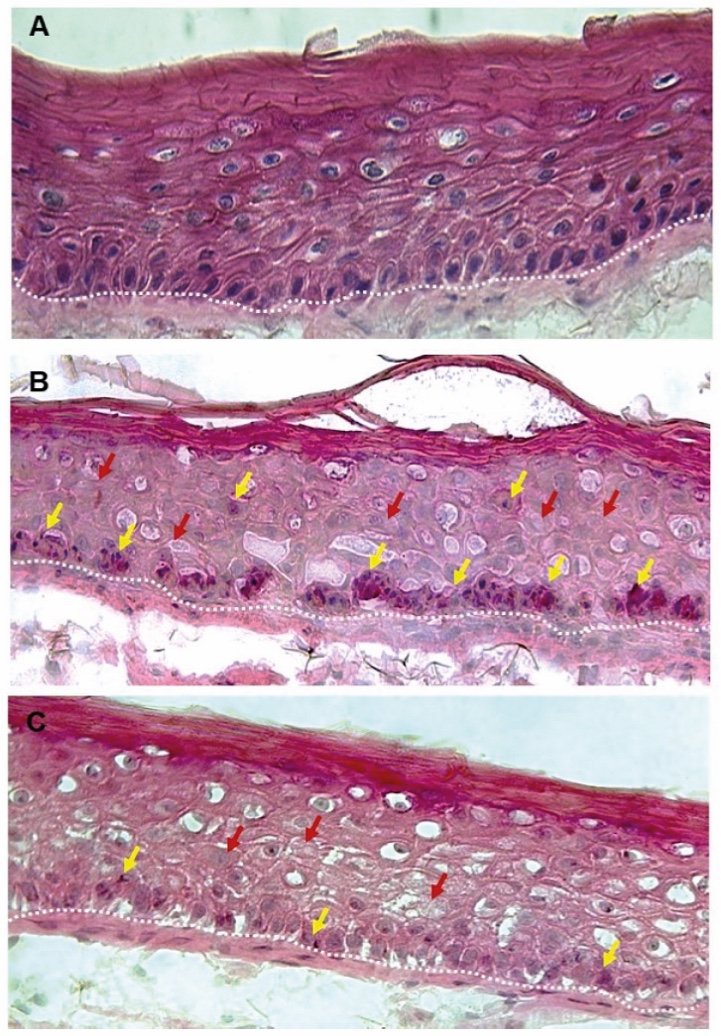
Figure 1. Skin Section with Microbiome. Most microorganisms live in the superficial layers of the stratum corneum and in the upper parts of the hair follicles. Some reside in the deeper areas of the hair follicles and are beyond the reach of ordinary disinfection procedures. There bacteria are a reservoir for recolonization after the surface bacteria are removed.
Materials and methods
Studies of major depressive disorder have been correlated with reduced Lactobacillus and Bifidobacteria and symptom severity has been correlated to changes in Firmicutes, Actinobacteria, and Bacteriodes. Gut microbiota that contain more butyrate producers have been correlated with improved quality of life (1).
A study in healthy women providing probiotic yogurt for four weeks showed an improvement in emotional responses as measured by brain scans (2). A subsequent study by Mohammadi et al. (3) investigated the impacts of probiotic yogurt and probiotic capsules over 6 weeks and found a significant improvement in depression-anxiety-stress scores in subjects taking the specific strains of probiotics contained in the yogurt or capsules. Other studies with probiotics have indicated improvements in depression scores, anxiety, postpartum depression and mood rating in an elderly population (4-7).
Other studies have indicated a benefit of probiotic supplementation in alleviating symptoms of stress. In particular, researchers have looked at stress in students as they prepared for exams, while also evaluating other health indicators such as flu and cold symptoms (1). In healthy people, there is an indication that probiotic supplementation may help to maintain memory function under conditions of acute stress.
Functions of the skin microbiome
The skin microbiome, defined as the genetic content and theatre of activity of the microbes inhabiting this unique environment, plays a crucial role in maintaining the skin barrier function. The skin forms various ecosystems based on sebum content, hydration, pH, and temperature. In addition to the dry, sebaceous, and moist skin sites—which are acidic, mostly dry, and aerobic—follicles are anaerobic and richer in lipids.
The skin microbiome is essential for an intact skin barrier, contributing to key physiological processes. This barrier forms a nearly impermeable layer that protects against pathogenic microorganisms and toxins. Microbes can produce molecules that activate the aryl hydrocarbon receptor (AHR) in keratinocytes, promoting epithelial differentiation and supporting epithelial integrity. For instance, S. epidermidis, which dominates dry skin areas, secretes sphingomyelinase. This enzyme helps the host acquire essential nutrients for the bacteria and assists in producing ceramides, crucial for skin hydration. C. acnes and Corynebacterium, enriched in sebaceous regions, secrete lipases that hydrolyze free fatty acids from sebum. These fatty acids maintain a low pH, fend off pathogenic bacteria, and induce skin immunity by stimulating the expression of antimicrobial peptides (AMPs).
Beyond supporting the skin barrier, the skin microbiome interacts closely with the immune barrier, especially when the skin barrier is compromised. It activates the innate immune system by stimulating γδ T cells and upregulating perforin-2, an AMP. S. epidermidis also promotes homeostatic T cell activation. C. acnes secretes short-chain fatty acids (SCFAs), which induce cytokines via the TLR-2 or TLR-3 pathway and limit biofilm formation by S. epidermidis.
Besides microbe-host interactions, microbe-microbe interactions additionally act as barriers against pathogenic invasion and infection. As a community the microbes sustain their ecological niches and maintain access to nutrients. Although microbial interactions are not fully understood, it is known that coagulase-negative Staphylococci (CoNS) such as S. epidermidis, S. capitis, S. caprae, S. hominis, S. lugdunensis, and S. haemolyticus secrete AMPs to inhibit S. aureus colonization. On the other hand, C. acnes defends its pilosebaceous niche against Staphylococcus colonization by releasing the AMP cutimycin. Through quorum sensing, staphylococci communicate to prevent S. aureus colonization and infection by blocking a regulator of S. aureus and reducing its toxin production.
Therefore, wound management needs a makeover, reducing disinfection to enhance wound healing. The skin microbiome significantly contributes to wound healing and the skin's defense against pathogens (2).
Potential influence of cosmetics and textiles on the skin microbiome
The skin microbiome is subject to many external and internal influences. It is influenced by the host genetics, diet, temperature, environment, geography, co-habitants of the host, medication and hygiene behaviour (3). Products like cosmetics, detergents and textiles used on a daily base over years have different effects on the skin´s microbiome. However, it is not easy to prove, since, luckily, our skin´s microbiome is able to regenerate after disturbance. Moreover, the majority of our skin´s microbiome resides in the follicles and invaginations of the skin, where it is protected against external influences (4).
However, Bouslimani et al. found that different products used in his study altered the microbiome and the chemistry of the participant’s skin. Compounds of the tested products such as lotions, deodorants, moisturizer or foot powder were detectable for more than 2 weeks after application, probably only completely disappeared after one cycle of skin renewal (21-28 days). Thus, a single application of some of these products has the potential to significantly alter the microbiome and skin chemistry for extended periods. Regular use can lead to an accumulation of these effects, further enhancing this potential (5). One component that was accumulated in the study was propylene glycol, which can cause contact dermatitis in a subset of the population (6).
Dr. Ian Myles from National Institute of Allergy and Infectious Diseases (NIAID) found that pollutants and textiles cannot only change the microbial composition but also the metabolism of skin microbiomes. The two chemicals isocyanate and xylene were found in increased amounts in areas in the US with higher Eczema prevalence. Myles exposed S. epidermidis strains to isocyanates and xylene. He found that the tested strains stopped producing ceramides in favor of Lysine, which helps the bacteria protecting themselves against toxins. Isocyanates and Xylene are sometimes used during the production process of certain textiles. Myles tested the effect of bedsheets manufactured with isocyanates or xylene and found that eczema related bacteria like S. aureus proliferated on these materials but not on cotton. Moreover, the production of lipids dropped in bacteria grown on materials made with xylene or isocyanate compared to untreated cotton (7).
It is clear, that every product we use in our daily lives, has an influence on the skin’s microbiota, either on their growth or their metabolism. Research around the skin microbiome is still in its infancy and currently used clinical methods to investigate potential effects must be improved. Until we have a better understanding of products influence on our microbiome, we must at least make sure that the influence is as little as possible – it must be ‘Microbiome-friendly’.
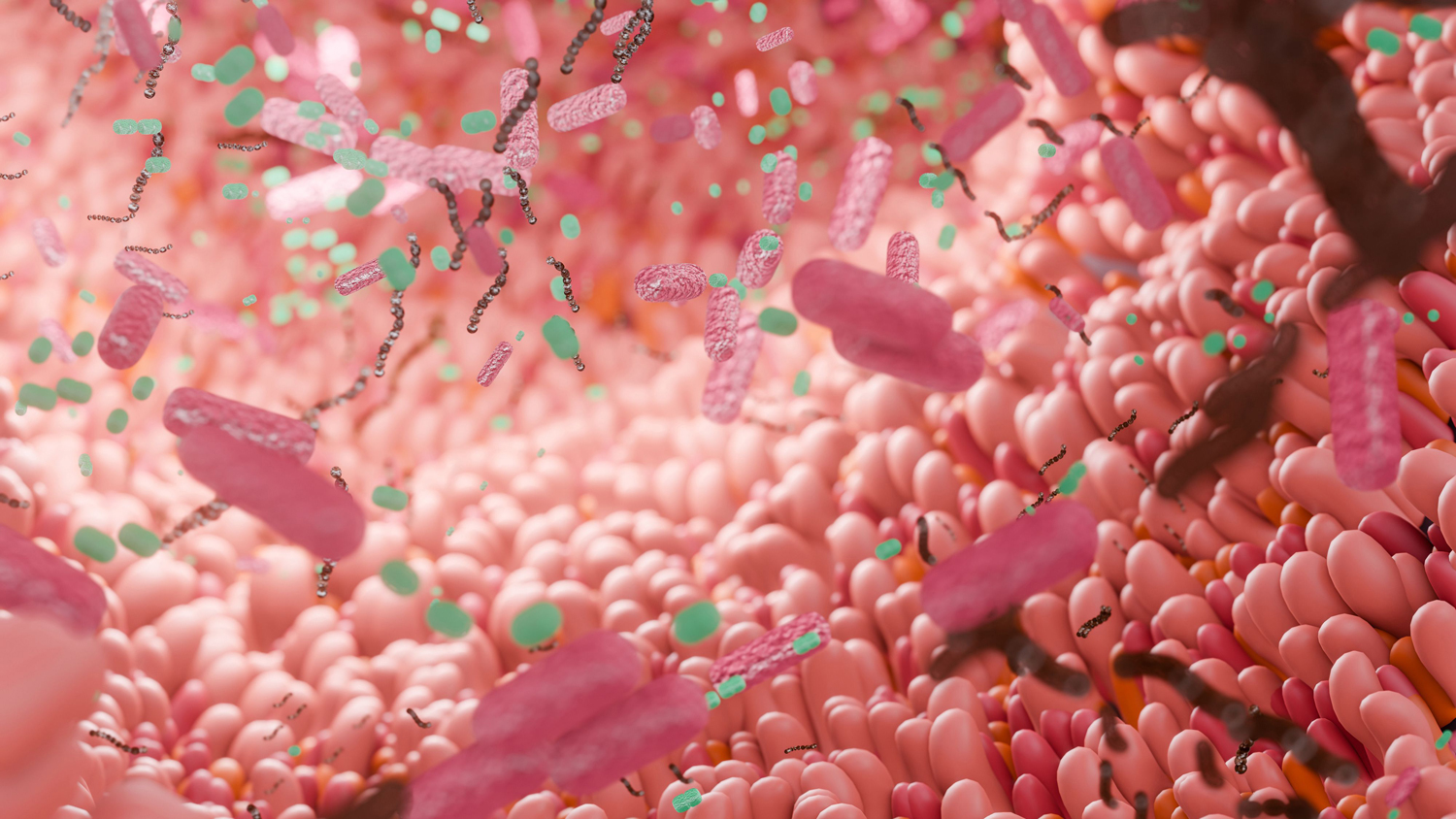
How to substantiate the ‘Microbiome-friendly’ claim
Although there are discussions ongoing around different methodologies for testing the influence of cosmetics on the skin microbiome, such as in vivo, in vitro, or ex vivo, it is even more important to discuss the methods used in each of the different approaches. These must be looked at more in depth than it is currently being done. Depending on the scientific question, each method has its value, but it must be designed in the right way. As a brand owner it can be hard to understand the ups and downs of certain methods, therefore transparency and education by the testing facilities is key.
When it comes to substantiation of a ‘Microbiome-friendly’ claim, the tests must be conducted in a way that is giving the assurance that a product or ingredient is safe for the skin’s microbiome. The term ‘Microbiome-friendly’ is rather passive and means that a product or ingredient does not affect the existing healthy skin microbiome of the customer when applied.
The safest and most sensitive way to find out if a product influences the skin’s microbiome, is rigorous in vitro testing on the most representative strains found on the respective skin area. Since there is no definition for ‘Microbiome-friendliness’, determining whether a product meets this criterion is crucial. Having developed antimicrobials for almost a decade, a 1-log-reduction is rated as clear antibacterial activity, which means 90% reduction of a specific strain. ‘Microbiome-friendly’ means the opposite of antimicrobial and should be at the opposite side, meaning no reduction of the strain’s growth at all. For practical and statistical interpretation for ‘Microbiome-friendly’ claims, a compound should not unproportionally affect the growth of the relevant species. A 30% reduction which is applied in our certification standards, can be considered as a small change which is in line with the suggestion made by van Belkum et al., 2023 (8). However, not only the reduction of growth but also the growth increase of the tested strains must be limited, as this also creates an imbalance of the microbiome, and is not ‘Microbiome-friendly’ in the logic of ‘not-interfering’. The design of the test must be scientifically sound, which means that the relevant strains should be included, depending on where on the body the product is applied, the right controls are implied, the test results are providing the right answer to the question, and interpretation of the results is correct.
The ’Microbiome-friendly’ claim is a widespread claim in the industry. They are based on different approaches though, such as adding certain ingredients such as pro-, pre- or postbiotics, reducing certain ingredients such as surfactants or preservatives or adjustment of the pH. These approaches might help to make products more ‘Microbiome-friendly’ however testing their effect on the microbiota is imperative as predictions from looking at the INCI list only, cannot be made. As a rule of thumb: less is more. When formulating with the microbiome in mind, high quality ingredients should be used in minimal amounts and number. Specifically, surfactants have a strong effect on the microbiota, and it can be a challenge to develop a microbiome-friendly wash but it is possible.
When looking for a ‘Microbiome-friendly’ certification of your products or ingredients, make sure the protocol is of high scientific quality (check the details!) and the evaluation is meaningful.
Conclusion
The future of cosmetics lies in the continued evolution of holistic approaches which represents a transformative shift in the industry, merging scientific advancements, natural ingredients, and wellness principles. By understanding and embracing the interconnectedness of these elements, the cosmetics industry can cultivate products that not only enhance external beauty but also contribute to the overall well-being of individuals and the planet.
The interplay between beauty from within and topical cosmetics is the key for future products. The integration of biotechnology and green chemistry is revolutionizing cosmetic formulations, offering sustainable and biocompatible alternatives.
Developers can implement blockchain to trace the journey of ingredients from source to product. Nevertheless, the efficacy of the natural products should be scientifically proven. Marketers can communicate transparency as a brand value, and parallelly educate consumers by highlighting how specific ingredients contribute to radiant and healthy skin.
By embracing the synergy between these approaches and leveraging scientific advancements, the cosmetics industry can provide consumers with comprehensive beauty solutions that cater to both internal and external dimensions of beauty.
Surfactant Applications
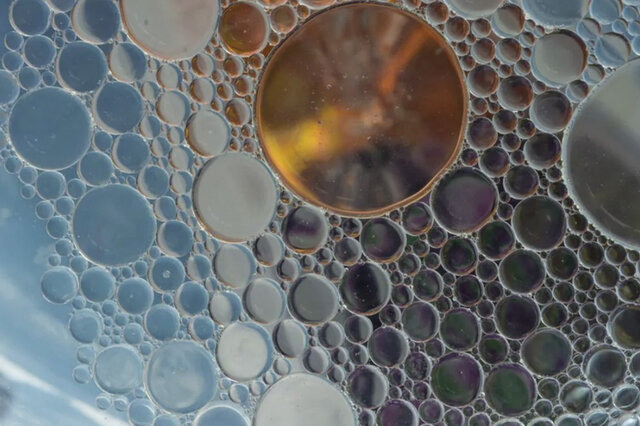
The application area lends itself particularly well to the use of AI. Active today in this area is the US company Potion AI (6). The company provides AI-powered formulation tools for beauty and personal care R&D. Their offerings include Potion GPT, next generation ingredient and formula databases and AI document processing. Potion’s work could have a significant impact on the entire surfactant value chain, from raw material suppliers to end consumers. By using their GPT technology, they can help target work toward novel surfactant molecules that have optimal properties for specific applications. By using their ingredient and formula databases, they can access and analyze a vast amount of data on surfactant performance, safety, and sustainability. By using their AI document processing, they can extract and organize relevant information from patents, scientific papers, and regulatory documents. These capabilities could enable Potion AI's customers to design and optimize surfactant formulations that are more effective, eco-friendly, and cost-efficient. A particularly interesting application for this type of capability is deformulation.
Deformulation is the process of reverse engineering a product's formulation by identifying and quantifying its ingredients. Deformulation can be used for various purposes, such as quality control, competitive analysis, patent infringement, or product improvement. However, deformulation can be challenging, time-consuming, and costly, as it requires sophisticated analytical techniques, expert knowledge, and access to large databases of ingredients and formulas.
AI can potentially enhance and simplify the deformulation process by using data-driven methods to infer the composition and structure of a product from its properties and performance. For example, AI can use machine learning to learn the relationships between ingredients and their effects on the product's characteristics, such as color, texture, fragrance, stability, or efficacy. AI can also use natural language processing to extract and analyze information from various sources, such as labels, patents, literature, or online reviews, to identify the possible ingredients and their concentrations in a product.
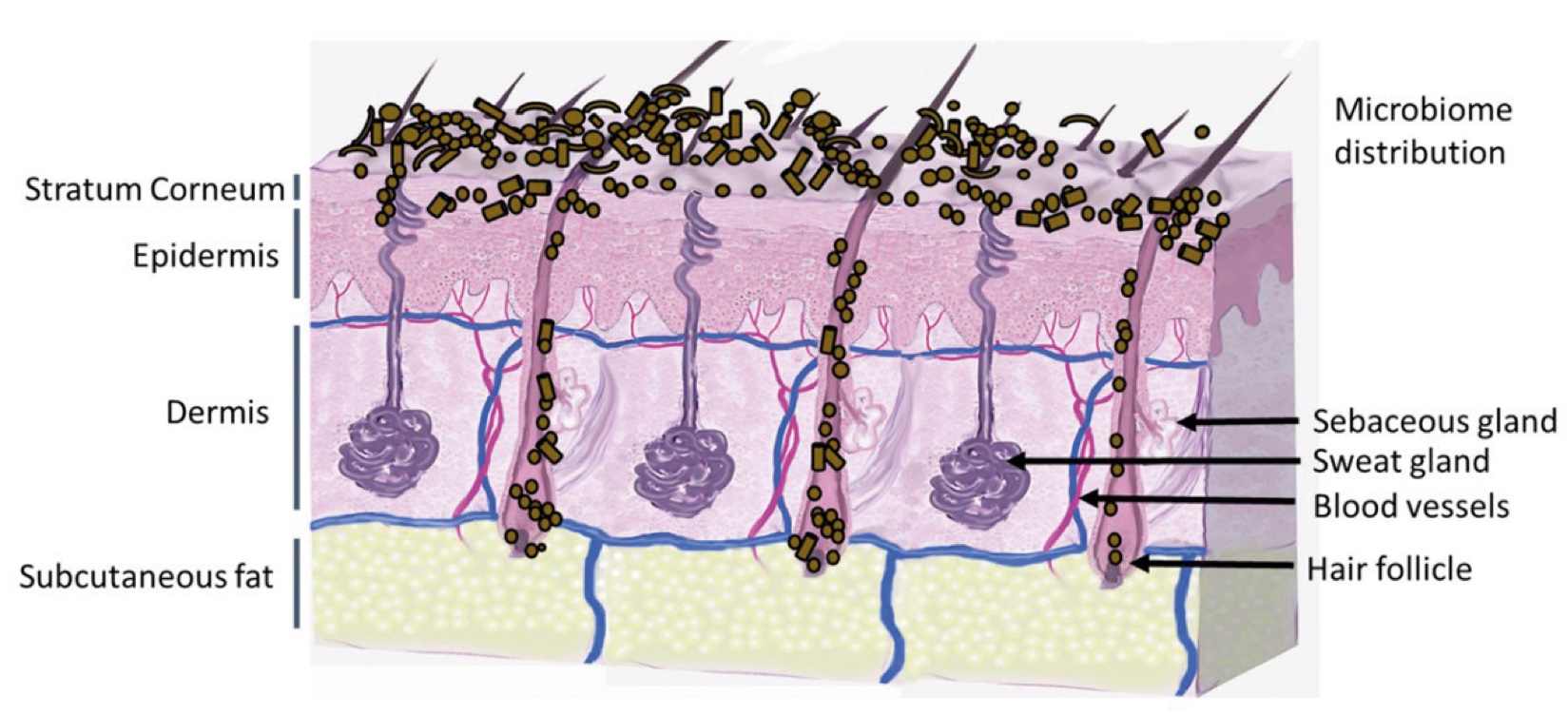
Figure 2. Skin Section with Microbiome. Most microorganisms live in the superficial layers of the stratum corneum and in the upper parts of the hair follicles. Some reside in the deeper areas of the hair follicles and are beyond the reach of ordinary disinfection procedures. There bacteria are a reservoir for recolonization after the surface bacteria are removed.
References and notes
Lee, H.-J.; Kim, M. Skin Barrier Function and the Microbiome. Int. J. Mol. Sci. 2022, 23, 13071. https://doi.org/10.3390/ ijms232113071 https://www.mdpi.com/1422-0067/23/21/13071
Boxberger M, Cenizo V, Cassir N, La Scola B. Challenges in exploring and manipulating the human skin microbiome. Microbiome. 2021 May 30;9(1):125. doi: 10.1186/s40168-021-01062-5. PMID: 34053468; PMCID: PMC8166136. https://microbiomejournal.biomedcentral.com/articles/10.1186/s40168-021-01062-5
Acosta Ellen M, Little Katherine A, Bratton Benjamin P, Lopez Jaime G, Mao Xuming, Payne Aimee, Donia Mohamed S, Devenport Danelle, Gitai Zemer (2023) Bacterial DNA on the skin surface overrepresents the viable skin microbiome eLife 12:RP87192 https://doi.org/10.7554/eLife.87192.1
Bouslimani, A., da Silva, R., Kosciolek, T. et al. The impact of skin care products on skin chemistry and microbiome dynamics. BMC Biol17, 47 (2019). https://doi.org/10.1186/s12915-019-0660-6
Zirwas MJ, Moennich J. Antiperspirant and deodorant allergy: diagnosis and management. J Clin Aesthet Dermatol. 2008;1(3):38–43. https://www.ncbi.nlm.nih.gov/pmc/articles/PMC3013594/pdf/jcad_1_3_38.pdf
van Belkum A, Lisotto P, Pirovano W, Mongiat S, Zorgani A, Gempeler M, Bongoni R and Klaassens E (2023) Being friendly to the skin microbiome: Experimental assessment. Front. Microbiomes 1:1077151. doi: 0.3389/frmbi.2022.1077151 https://www.frontiersin.org/articles/10.3389/frmbi.2022.1077151/full
